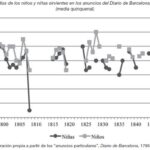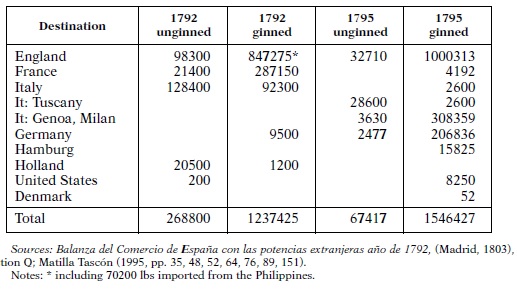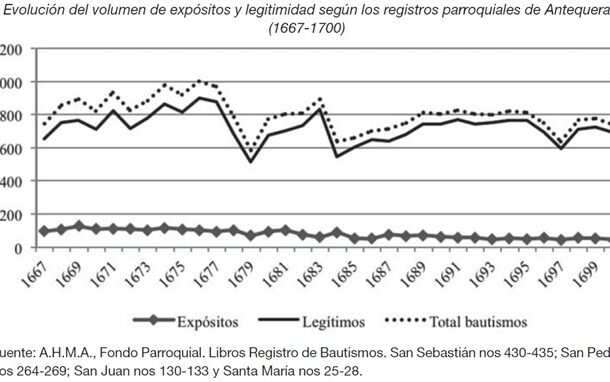
The graph shows the evolution of the age of access to the labour market for child servants between the end of the Ancien Régime and the beginning of the industrial economy. The spatial scope situates us in Barcelona, and the periods covered have “gaps” of information based on episodes that altered the sources, such as the War of Independence. The author points out that during the period between 1795 and 1850, the variation in age was a response to the work to be carried out by the children: while girls between 9 and 10 years of age began to work as nannies, boys who began to work at that age were employed as footmen. However, the age of majority was between 13 and 14 for girls and 14 and 15 for boys. The physical development of adolescence allowed them to carry out harder and heavier work in the service they performed. After the end of the Ancien Régime, the ages of access to work were not affected, showing this resource as an example of continuity in socio-economic practices.
Collection: Graphics
Project: 3. Rural world and urban world in the formation of the European identity., 4. Family, daily life and social inequality in Europe.
Chronology: XVIII, XIX
Scope: Secondary Education, Baccalaureate, University
Resource type: Graph
Format: Line chart
Source: Iturralde Valls, M. (2015). "Las edades de acceso al mercado de trabajo formal: de los oficios tradicionales a la industria algodonera moderna, Barcelona, 1784-1856", en Revista de Demografía Histórica, XXXIII, 1, p. 81.
Language: Spanish
Date: 2015
Owner: Pablo Ballesta Fernández (Modernalia)
Copyright: ©Revista de Demografía Histórica ©Martín Iturralde Valls
Abstract: Average age of entry to work in Barcelona according to the sex of the children
Image
Tags








